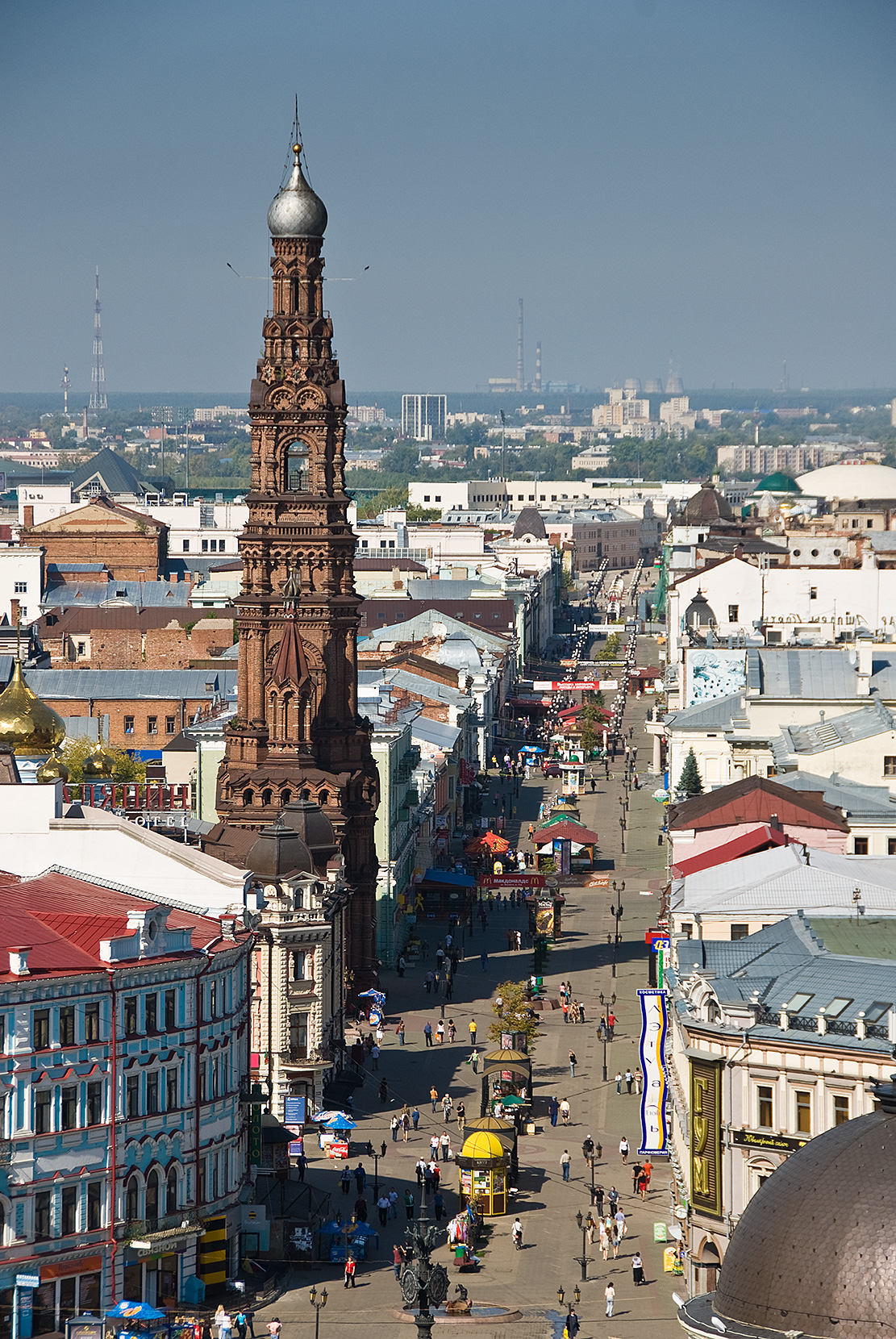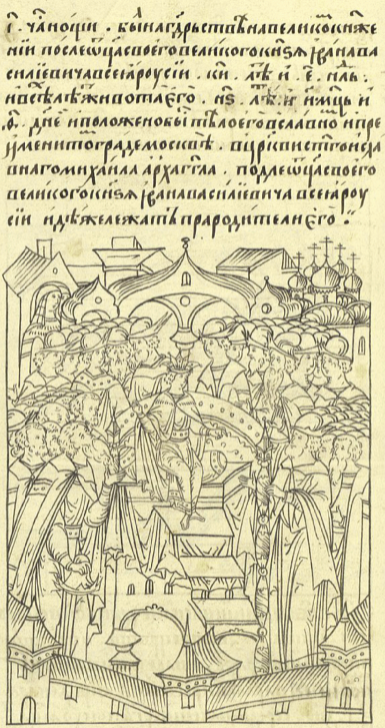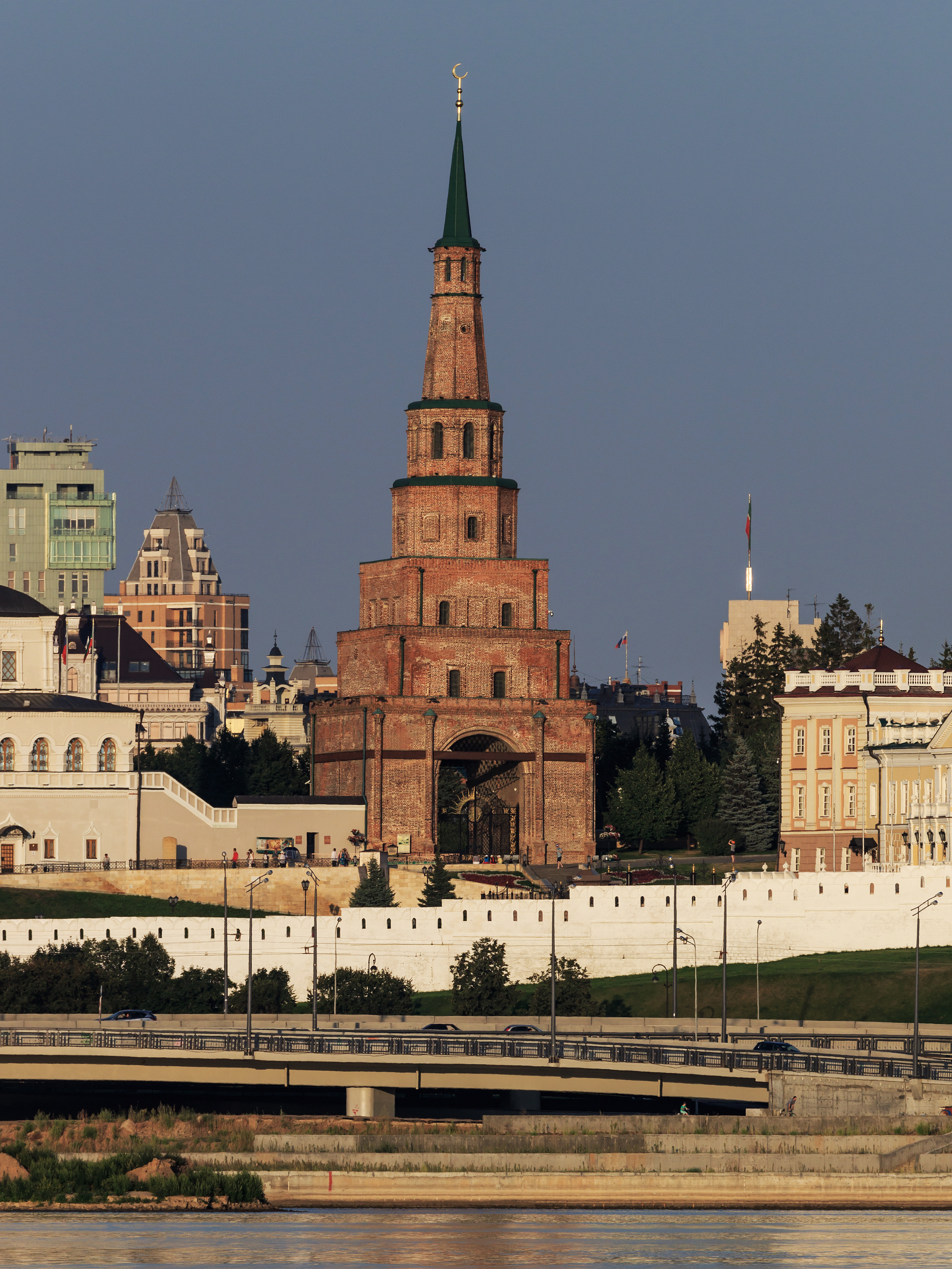|
Kazan
Kazan; , IPA: Help:IPA/Tatar, [qɑzan] is the largest city and capital city, capital of Tatarstan, Russia. The city lies at the confluence of the Volga and the Kazanka (river), Kazanka Rivers, covering an area of , with a population of over 1.3 million residents, and up to nearly 2 million residents in the greater Kazan metropolitan area, metropolitan area. Kazan is the List of cities and towns in Russia by population, fifth-largest city in Russia, being the Volga#Biggest cities on the shores of the Volga, most populous city on the Volga, as well as within the Volga Federal District. Historically, Kazan was the capital of the Khanate of Kazan, and was Siege of Kazan, conquered by Ivan the Terrible in the 16th century, at which point the city became a part of the Tsardom of Russia. The city was seized (and largely destroyed) during Pugachev's Rebellion (1773–1775), but was later rebuilt during the reign of Catherine the Great. In the following centuries, Kazan grew to become a ... [...More Info...] [...Related Items...] OR: [Wikipedia] [Google] [Baidu] |
Republic Of Tatarstan
Tatarstan, officially the Republic of Tatarstan, sometimes also called Tataria, is a Republics of Russia, republic of Russia located in Eastern Europe. It is a part of the Volga Federal District; and its capital city, capital and largest city is Kazan, an important cultural centre in Russia. The region's main source of wealth is Petroleum, oil with a strong Petrochemical industry, petrochemical industry. The republic borders the Oblasts of Russia, oblasts of Kirov Oblast, Kirov, Ulyanovsk Oblast, Ulyanovsk, Samara Oblast, Samara and Orenburg Oblast, Orenburg, as well as the republics of Mari El, Udmurtia, Chuvashia and Bashkortostan. The area of the republic is , occupying 0.4% of the total surface of the country. As of the Russian Census (2021), 2021 Census, the population of Tatarstan was 4,004,809. Tatarstan has strong cultural, linguistic and ethnic ties with its eastern neighbour, Bashkortostan, which is also a republic of Russia. The official languages of the republ ... [...More Info...] [...Related Items...] OR: [Wikipedia] [Google] [Baidu] |
Khanate Of Kazan
The Khanate of Kazan was a Tatar state that occupied the territory of the former Volga Bulgaria between 1438 and 1552. The khanate covered contemporary Tatarstan, Mari El, Chuvashia, Mordovia, and parts of Udmurtia and Bashkortostan; its capital was the city of Kazan. It was one of the successor states of the Golden Horde (Mongol state), and it came to an end when it was conquered by the Tsardom of Russia. Geography and population The territory of the Khanate comprised the Muslim Bulgar-populated lands of the Bolğar, Cükätäw, Kazan, and Qaşan duchies and other regions that originally belonged to Volga Bulgaria. The Volga, Kama and Vyatka were the main rivers of the khanate, as well as the major trade ways. The majority of the population were Kazan Tatars. Their self-identity was not restricted to Tatars; many identified themselves simply as Muslims or as "the people of Kazan". Islam was the state religion. The local feudal nobility consisted of ethnic ... [...More Info...] [...Related Items...] OR: [Wikipedia] [Google] [Baidu] |
Siege Of Kazan
The siege of Kazan or Fall of Kazan in 1552 was the final battle of the Russo-Kazan Wars and led to the fall of the Khanate of Kazan. Conflict continued after the fall of Kazan, however, as rebel governments formed in Çalım and Mişätamaq, and a new khan was invited from the Nogais. This guerrilla war lingered until 1556. Background During the existence of the khanate (1438–1552) Russian forces besieged Kazan at least ten times (1469, 1478, 1487, 1506, 1524, 1530, 1545, 1547, 1549–1550, 1552). In 1547 and in 1549–1550, Ivan the Terrible besieged Kazan, but supply difficulties forced him to withdraw. The Russians pulled back and built the town or fort of Sviyazhsk. They also annexed land west of the Volga which weakened the khanate. The peace party agreed to accept the pro-Russian Shah Ali as khan. The patriotic party regained power, Shah Ali fled and Yadegar Mokhammad of Kazan was called in as khan. Religious leaders like Qolsharif inspired the people to a determi ... [...More Info...] [...Related Items...] OR: [Wikipedia] [Google] [Baidu] |
Kazan Kremlin
The Kazan Kremlin (; ) is the chief historic citadel of Russia, situated in the city of Kazan. It was built at the behest of Ivan the Terrible on the ruins of the former castle of list of Kazan khans, Kazan khans. It was declared a World Heritage Site in 2000. History and monuments The Kazan Kremlin (fortification), Kremlin includes many old buildings, the oldest of which is the Annunciation Cathedral (1554–1562), the only 16th-century Russian church to have six piers and five apses. Like many of Kazan's buildings of the period, it is constructed of local pale sandstone rather than of brick. The renowned Pskov architects Postnik Yakovlev and Ivan Barma, Ivan Shirjay (called Barma) were invited by the Tzar to rebuild the Kazan Kremlin in stone. The cathedral bell tower was erected in five tiers at the urging of Ivan the Terrible and was scored to resemble the Ivan the Great Belltower in Moscow, but was pulled down by the Soviets in 1930. The most conspicuous landmark of th ... [...More Info...] [...Related Items...] OR: [Wikipedia] [Google] [Baidu] |
Epiphany Cathedral (Kazan, Russia)
The Epiphany Cathedral (Tatar language, Tatar: Богоявление чиркәве) is an Orthodoxy, Orthodox church located in the Kazan subdistrict and is part of the Diocese of Kazan, Kazan and Tatarstan Diocese. The church is situated in the Vakhitovsky district of Kazan on Bauman Street, Kazan, Bauman Street. Its bell tower is a prominent landmark of the city and a monument of religious architecture. History The Epiphany season, Epiphany wooden church was built in the place of the old Prolomny Gate in the 17th century. The adjacent Novaya Sloboda, also known as the Epiphany Sloboda, was built along Prolomnaya Street. The Church of Andrew the Apostle, St. Andrew the First-Called was built in 1701 next to the Church of the Epiphany. The stone church of the Epiphany and the belltower were built by merchants Ivan Afanasievich Mikhlyaev and Sergey Alexandrovich Chernov in 1731-1756. In 1741 the church was destroyed by fire and only the walls remained. It is believed that ... [...More Info...] [...Related Items...] OR: [Wikipedia] [Google] [Baidu] |
Ivan The Terrible
Ivan IV Vasilyevich (; – ), commonly known as Ivan the Terrible,; ; monastic name: Jonah. was Grand Prince of Moscow, Grand Prince of Moscow and all Russia from 1533 to 1547, and the first Tsar of all Russia, Tsar and Grand Prince of all Russia from 1547 until his death in 1584. Ivan's reign was characterised by Russia's transformation from a medieval state to a fledgling empire, but at an immense cost to its people and long-term economy. Ivan IV was the eldest son of Vasili III of Russia, Vasili III by his second wife Elena Glinskaya, and a grandson of Ivan III of Russia, Ivan III. He succeeded his father after his death, when he was three years old. A group of reformers united around the young Ivan, crowning him as tsar in 1547 at the age of 16. In the early years of his reign, Ivan ruled with the group of reformers known as the Chosen Council and established the ''Zemsky Sobor'', a new assembly convened by the tsar. He also revised the Sudebnik of 1550, legal code and in ... [...More Info...] [...Related Items...] OR: [Wikipedia] [Google] [Baidu] |
Kazanka (river)
The Kazanka (; ) is a river in the Russian Federation, a left tributary of the Volga. The Kazanka begins near the village of Bimeri in Arsk District and flows into the Kuybyshev Reservoir in Kazan, near the Kazan Kremlin. Other towns on the Kazanka are Arsk and historical Iske Kazan. The river is long, and has a drainage basin A drainage basin is an area of land in which all flowing surface water converges to a single point, such as a river mouth, or flows into another body of water, such as a lake or ocean. A basin is separated from adjacent basins by a perimeter, ... of .«Река КАЗАНКА» Russian State Water Registry The main tributaries are the Iya, [...More Info...] [...Related Items...] OR: [Wikipedia] [Google] [Baidu] |
Volga
The Volga (, ) is the longest river in Europe and the longest endorheic basin river in the world. Situated in Russia, it flows through Central Russia to Southern Russia and into the Caspian Sea. The Volga has a length of , and a catchment area of .«Река Волга» , Russian State Water Registry It is also Europe's largest river in terms of average discharge at delta – between and – and of . It is widely regarded as the national river of |
Bauman Street, Kazan
Bauman Street (; ) is a pedestrian street in the heart of Kazan, the capital of Tatarstan, Russia. It is named after Nikolay Bauman, a Russian revolutionary, and is located in the central part of the city. The street starts at the foot of the Kremlin and reaches Tukay Square, the central square in the city. Bauman Street is paved with multicoloured bricks; some benches and two lines of lanterns are set there. There are also planted lindens on the street. Different fairs and festive presentations are held on Bauman Street. History Bauman Street has long been regarded a trading centre and featured a concentration of the main mercantile establishments of the city. The street was the second most significant street of Kazan's central district. It was famous for its banks and notary offices, different shops, drugstores, and hotels. At the beginning of the twentieth century there was a shop in every building. Bauman Street has existed since the 15th century. It ran from the Khan's ... [...More Info...] [...Related Items...] OR: [Wikipedia] [Google] [Baidu] |
Söyembikä Tower
Söyembikä Tower (; ), also called the List of Kazan khans, Khan's Mosque, is probably the most familiar landmark and architectural symbol of Kazan. Once the highest structure of Kazan Kremlin, that city's kremlin, it used to be one of the so-called leaning towers. By 1990s, the inclination was . Diverse stabilization methods were used to straighten the tower in the 1930s and 1990s, and it no longer leans. The tower's construction date is enshrouded in mystery. Several scholars date its construction to the turn of the 18th century, when tiered towers were exceedingly popular in Russia. A legend postulates that the tower was built more than a century earlier by Ivan IV of Russia, Ivan the Terrible's artisans in just a week's time. As the legend goes, the Kazan queen Söyembikä threw herself down from the highest tier, hence the name. Some scholars believe that the tower may date further back than the 18th century. If the tower really reflects some original features of Tatar ... [...More Info...] [...Related Items...] OR: [Wikipedia] [Google] [Baidu] |
Ilsur Metshin
Ilsur Raisovich Metshin (; ; born April 24, 1969) is a Russian politician of Tatar descent. He has served as the mayor of Kazan since 2005. Career Ilsur Metshin was born in Nizhnekamsk in 1969. From 1993, he worked in Kazan as a politician. From 1998, he was the mayor of Nizhnekamsk and Nizhnekamsky District and chairman of the Nizhnekamsk Council. From November 17, 2005, he was the mayor of Kazan, replacing Kamil Iskhakov. On September 4, 2015, he was selected as the new president of FC Rubin Kazan. He was elected chairman of the United Nations Advisory Committee of Local Authorities at the UCLG World Congress 2019 in Durban. On November 17, 2021 he was elected as the governing president of the United Cities and Local Governments at the 2021 UCLG World Council in Barcelona Barcelona ( ; ; ) is a city on the northeastern coast of Spain. It is the capital and largest city of the autonomous community of Catalonia, as well as the second-most populous municipality of Spain. ... [...More Info...] [...Related Items...] OR: [Wikipedia] [Google] [Baidu] |






